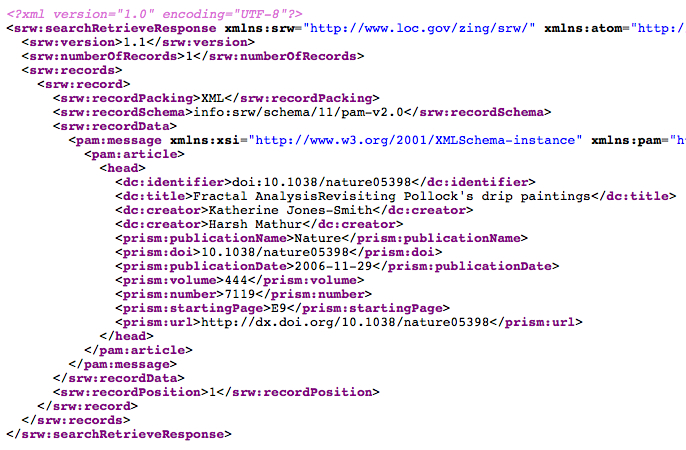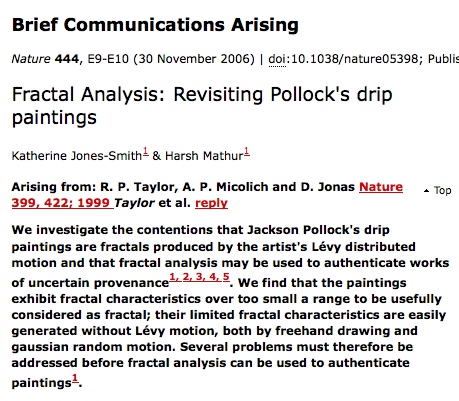2 minute read.Structured Search Using PRISM Elements
We just registered in the SRU (Search and Retrieve by URL) search registry the following components:
- Context Sets
This means that an
SRU (Search and Retrieve by URL) search engine that supported one of the PRISM context sets registered above could accept
CQL (Contextual Query Language) queries such as the following:
- prism.doi = “10.1038/nature05398”
- prism.publicationName = “Nature” and prism.volume = “444” and prism.number = “7119” and prism.startingPage = “E9”
- dc.identifier = “doi:10.1038/nature05398”
- dc.creator = “Jones-Smith” and prism.publicationName = “Nature” and prism.publicationDate > “2006-01-01”
- dc.title any “fractal pollock” and prism.publicationName = “Nature” sortBy prism.publicationDate/sort.descending
(Note that the quotes are only needed above for the DOI strings which contain a “/” character. Otherwise they are optional in the above examples.)
Any query such as one of the above (here #1) could be sent to the server on a querystring like so:
?version=1.1&operation=searchRetrieve&query=prism.doi=%2210.1038/nature05398%22
and if the server were also equipped to respond with PAM (PRISM Aggregator Message) format for result records, a response might look like this:

PAM was discussed here earlier.
Such a structured response would provide the metadata elements for applications to build various interfaces into the original article:

We think that these PRISM components (context sets and schemas) will be useful for structured search of scholarly publications.
Related pages and blog posts






